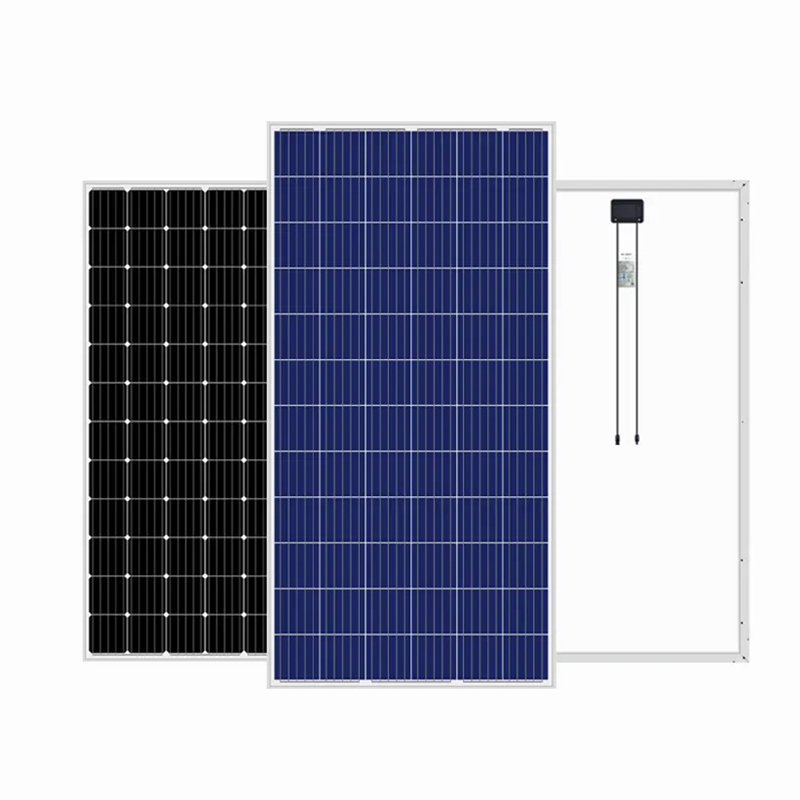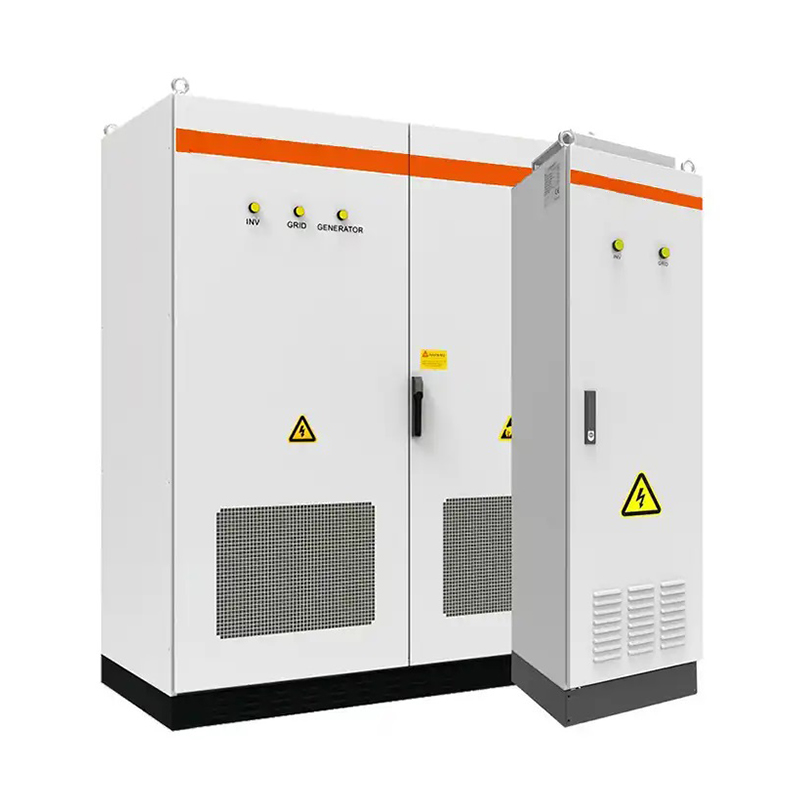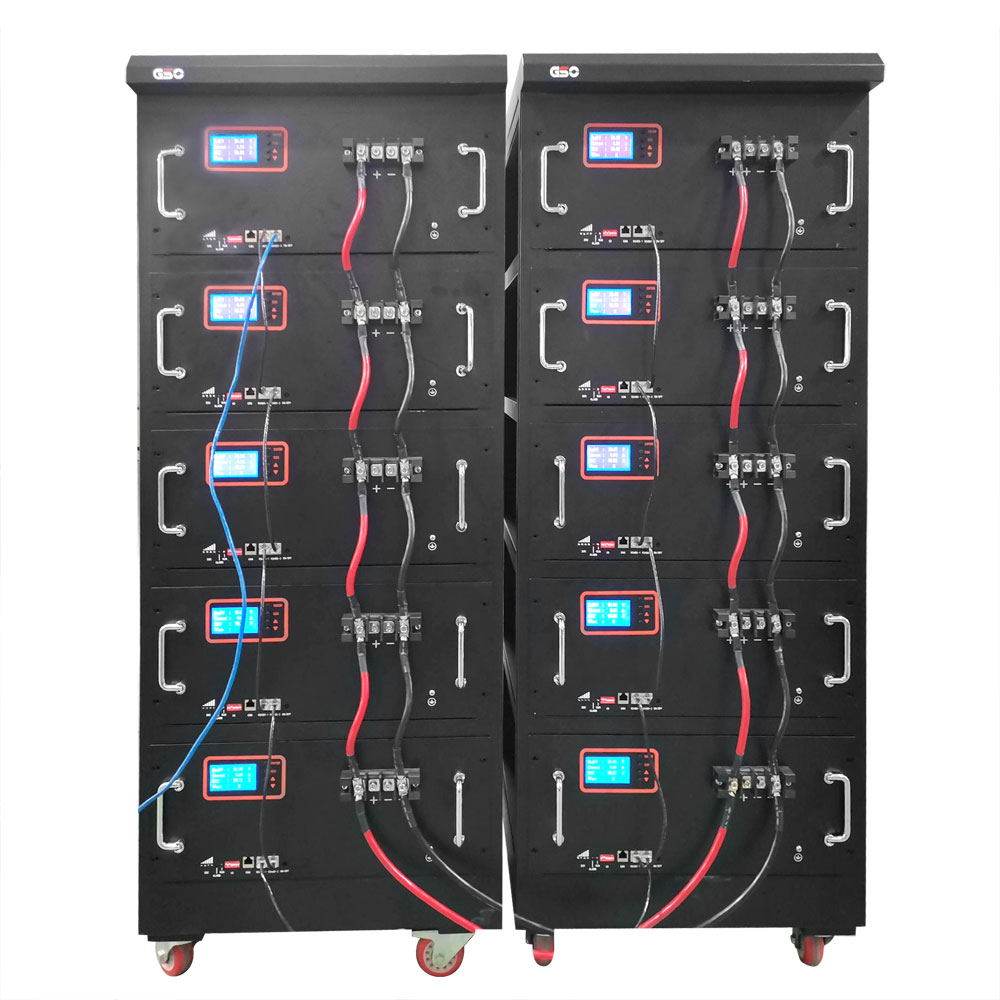In recent years, the demand for sustainable energy solutions has surged, leading to the widespread use of solar power and energy storage systems. Whether for industrial, commercial applications or domestic use, these systems are designed to efficiently utilize solar energy. A complete off-grid solar power and energy storage system consists of several basic components that work together to provide reliable and sustainable energy. This article will explore these components in detail, focusing on their importance in large-scale and small-scale solar power systems.

Solar panels: the heart of solar power generation
At the heart of any solar power system, whether industrial or residential, are solar panels. These panels are responsible for converting sunlight into direct current (DC). In industrial and commercial solar power systems, high-efficiency solar panels are often used to maximize energy output given the larger energy needs of the business.With the improvement of solar panel technology, the current TOPcon and HJT technologies have increased the power generation efficiency of solar panels from about 20% to about 24% compared with the previous PERC technology, greatly increasing the power generation..
Inverter: Converts DC power into AC power
Once the solar panels are generating DC electricity, the next critical component is the inverter. Inverters are essential for converting the DC electricity generated by solar panels into alternating current (AC), the standard form of electricity used in homes and businesses. In industrial and commercial solar power systems, inverters are typically more rugged and capable of handling larger loads, ensuring efficient use of the energy generated. For home solar power systems, smaller inverters are typically used, but they still need to be reliable and efficient to ensure optimal energy conversion. The choice of inverter can significantly affect the overall efficiency of your solar power system.


Energy storage batteries: storing excess energy
One of the key benefits of solar power systems is the ability to store excess energy for later use. This is where energy storage batteries come into play. Both industrial and commercial solar power systems, as well as home systems, use batteries to store excess energy generated during peak sunlight hours. This stored energy can be used during periods of low sunlight or high energy demand. The type and capacity of energy storage batteries will vary depending on the size of the system. Industrial systems may require larger, more advanced battery solutions, while home systems can often rely on smaller, more compact batteries. Regardless of the size, energy storage is a key component to improving the reliability and efficiency of solar power systems.
Brackets and cables: supporting infrastructure
While solar panels, inverters, and storage batteries are the main components of solar power generation and energy storage systems, the supporting infrastructure is equally important. Brackets are used to securely mount solar panels, ensuring they are in the best position to capture sunlight. The quality and durability of these brackets can affect the lifespan and performance of solar panels. In addition, cables are essential for connecting all components of the system to ensure seamless transmission of current. Whether in industrial and commercial applications or in home systems, choosing high-quality cables is essential to minimize energy loss and ensure safety.
Conclusion: The future of solar power and energy storage systems
All in all, a complete off-grid solar power generation and energy storage system consists of several key components: solar panels, inverters, energy storage batteries, brackets and cables. Whether it is used for commercial and industrial solar power generation or home solar power generation, each component plays a vital role in ensuring that the system operates efficiently and reliably. As the world continues to turn to sustainable energy solutions, understanding these components is crucial for anyone who wants to invest in solar technology. By combining high-quality components and innovative technologies, both large and small solar power generation systems can provide sustainable energy to meet future needs. Embracing solar power generation and energy storage systems is not just a trend, but a necessary step towards a greener and more sustainable world.
Post time: Jun-27-2025

